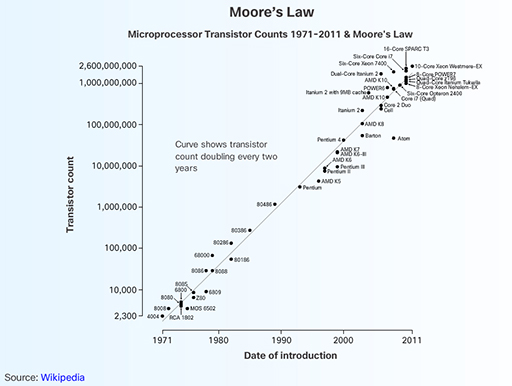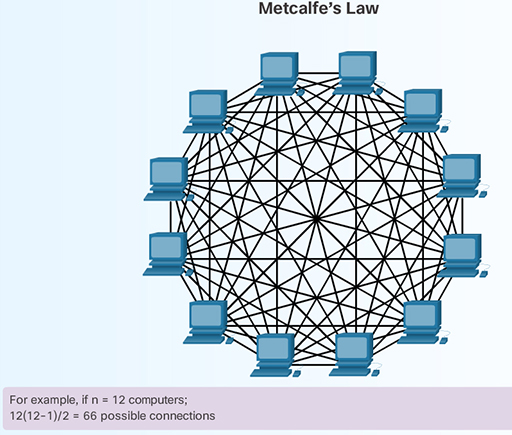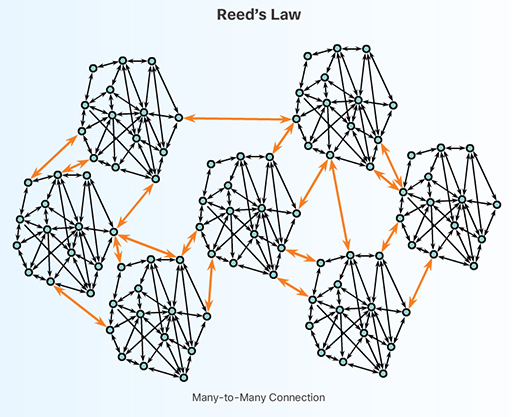4.2.15 Technological growth
Today, the rate of technological growth is accelerating exponentially. To maintain a competitive advantage, organisations must be able to account for this growth.
There are three primary principles, referred to as laws that organisations and experts can use to help them plan for technological needs:
- Moore’s Law – This law was proposed by Gordon E. Moore, co-founder of Intel, in 1965. It states that the number of transistors on integrated circuits tend to double every two years, which increases processing capacity.
- Metcalfe’s Law – This law is attributed to Robert Metcalfe. It states that the value of a given network is proportional to the square of the number of users connected to it. As shown in Figure 78 Metcalfe's Law relates to the number of unique connections in a network of (n) nodes, mathematically expressed as n(n−1)/2. The value described by this law is therefore proportional to n^2.
- Reed’s Law – This law was proposed by David Reed. It states that the value of the network grows exponentially if you add up all the potential two-person groups, three-person groups, etcetera, that members could form. This is represented as 2^n and is best seen with social media networks.
Metcalfe's law is frequently mentioned when explaining the internet's explosive growth. Together, Metcalfe's and Moore's laws provide a solid foundation to explain the ever increasing presence and value of information technology in people's daily lives.



